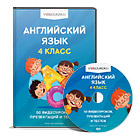Hello, boys and girls! My name is Bobby.
And my name is Tobby. This is our friend Mobby.
Welcome to our lesson.
Today we have a guest.
It’s our classmate Liam.
Hi, guys! I came to you, because I need your help!
Oh, okay. What kind of help do you need?
Well… When I came to you last Friday, you told me about the comparative adjectives.
Yes. That’s right, Liam.
Guys, my friends told me that there are also superlative adjectives. Is it true?
Yes, it’s true, Liam. Would you like us to tell you about them?
Well, if it’s no bother.
Oh, believe me, it’s not!
Yeah! We will explain this rule to you with a great pleasure!
Oh, thank you so much.
No problem, Liam!
All right, boys! Let’s start.
So today in the lesson we will:
revise the comparative adjectives;
talk about the superlative adjectives;
learn how to compare three or more things;
And
put the knowledge into practice.
First of all, you need to know that adjectives can be:
comparative;
And
superlative.
Comparative adjectives or comparatives are used to compare differences between the two objects they modify.
Superlative adjectives compare three or more nouns and show the noun with the highest degree.
As we’ve already said, today we are going to talk about the superlative adjectives.
And first of all, let’s answer the question “How do we form sentences with superlative adjectives?”
To form them, we must use the following construction:
In the first place we put the first noun. After that we use the verb. In the third place we use the superlative adjective. And then we put the second noun.
For example:
Canada is the biggest country in North America.

Christopher is the tallest boy in his class.

Or
Everest is the highest mountain in the world.
Now let’s revise how to form comparatives and learn how to form superlatives.
To form them we must know the following rules.
Let’s start with the first and the main rule: To form comparative adjectives, we need to add the ending -er to the adjective. And to form superlative adjectives, we need to add the article “the” and the ending -est to the adjective.
For example:
Tall – taller – the tallest
Высокий – выше – самый высокий
or
Small – smaller – the smallest
Маленький – меньше – самый маленький
The second rule: If the adjective ends with one consonant and one vowel, the last consonant must be doubled. And if we form comparatives, after that we need to add the ending -er. But if we form superlatives, after that we need to add the ending -est and the article “the” to this adjective.
For example:
Big – bigger – the biggest
Большой – больше – самый большой
Or
Fat – fatter – the fattest
Толстый – толще – самый толстый
The third rule: If the adjective ends with the letter “e”, we need to add the ending -r instead of -er (if we form the comparative adjectives) and we need to add the ending -st instead of -est and the article “the” (if we form the superlative adjectives).
For example:
Nice – nicer – the nicest
Красивый – красивее – самый красивый
Or
Large – larger – the largest
Большой – больше – самый большой
And the last rule: If the adjective ends with the letter “y”, we need to change it to the letter “i”. And if we form comparatives, after that we must add the ending -er. But if we form superlatives, after that we must add the ending -est and the article “the”.
For example:
Happy – happier – the happiest
Счастливый – счастливее – самый счастливый
Or
Heavy – heavier – the heaviest
Тяжёлый – тяжелее – самый тяжелый
Now let’s talk about the exceptions. We have to memorize them, because they don’t follow the rules.
And the exceptions are:
Good – better – the best
Хороший – лучше – самый лучший
Bad – worse – the worst
Плохой – хуже – самый худший
Little – less – the least
Маленький – меньше – самый маленький
Liam, we’ve told you everything you need to know about the comparative and superlative adjectives.
Now we would like to check your knowledge.
Sure. No problem.
Your task is to look at the pictures and make the sentences.
For example:
On these pictures we can see a dog, a cow and an elephant.
The adjective is “big”.
And the sentences are:
The dog is big.
The cow is bigger.
And
The elephant is the biggest.
Now look at the following pictures. Here we can see a zebra, a polar bear and a giraffe.
The adjective is “tall”.
Let’s check.
The zebra is tall.
The polar bear is taller.
And
The giraffe is the tallest.
On these pictures we can see a pig, a seal and a hippo. The adjective is “fat”.
Check yourselves.
The pig is fat.
The seal is fatter.
And
The hippo is the fattest.
Now look at the following pictures. Here we can see a cat, a frog and a mouse. The adjective is “small”.
Let’s check.
The cat is small.
The frog is smaller.
And
The mouse is the smallest.
On these pictures we can see a lion, a wildebeest and a cheetah. The adjective is “fast”.
Check yourselves.
The lion is fast.
The wildebeest is faster.
And
The cheetah is the fastest.
Now look at the following pictures. Here we can see a wolf, a fox and a snake. The adjective is “thin”.
Let’s check.
The wolf is thin.
The fox is thinner.
And
The snake is the thinnest.
Now look at the last three pictures. Here we can see a cat, a panda and a sloth. The adjective is “lazy”.
Check yourselves.
The cat is lazy.
The panda is lazier.
And
The sloth is the laziest.
Well done, Liam!
Now you know how to compare three or more things.
Yes, that’s right! Guys, thank you so much for your help!
Oh, it’s our pleasure, Liam!
All right! I have to go now. See you at school, boys!
See you, Liam.
That’s all for today, boys and girls!
We hope you liked the lesson!
See you soon, our dear friends.

 Получите свидетельство
Получите свидетельство Вход
Вход





 579
579

